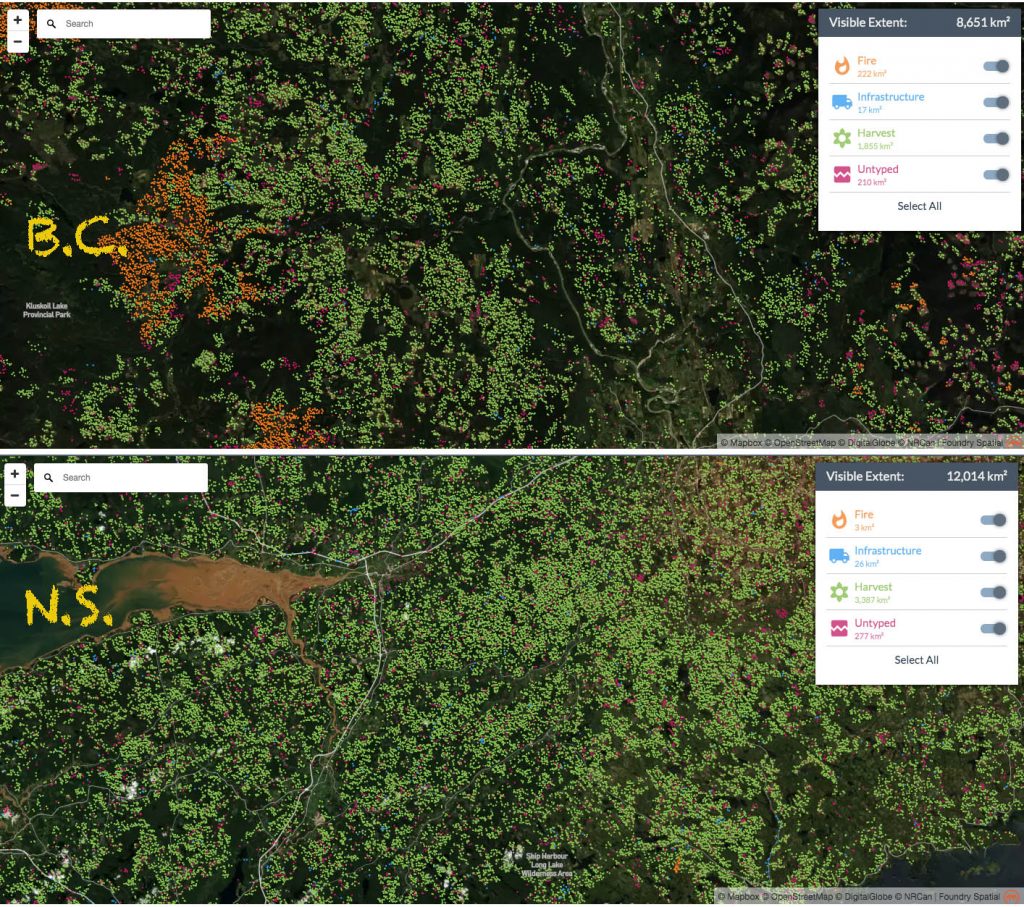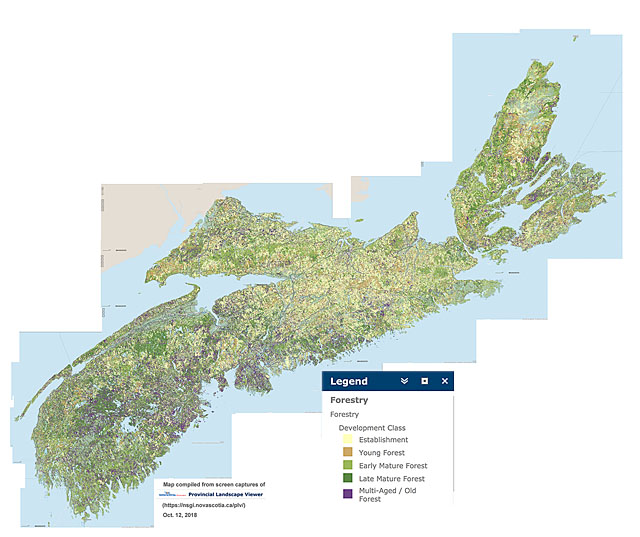Perhaps there are some lessons to be learned

John Zada’s Big Lonely in Canada’s Disappearing Giants
We are worried about losing The Mill, or for some, about the possibility of not losing it.
Perhaps there are some lessons to be learned from the west coast where this year “more than 4,000 forestry workers have lost their jobs according to the province”. So Lee Wilson writes in Forestry forum tries to find solutions to a struggling industry published on APTN News Oct 4, 2019.
Writes June Ross in a Letter to the Ed in Castanet a few days later: Forestry crash no surprise
As a tax-paying citizen, I am writing about all the complaining about forestry job losses.
Why does this now, after 40 years of inaction by any government, come as a surprise?
There are forestry acts (Private Managed Forests Lands Act, Forest and Range Practices Act) and regulations that have done nothing for us citizens.They have done nothing to save our watersheds from clear cutting that is decimating many drinking water watersheds across this province.
The lack of regulations to control corporate forestry practices has left us all screaming for our forests to be saved, screaming for our wildlife to be saved, screaming for the streams where the salmon spawn to be saved, screaming for our drinking water sources to be saved.
While I feel empathy for the forest reliant communities, they, along with the loggers and the fallers, knew this was coming.
The lost jobs need to encompass retraining in renewable resources.
Our forests as we knew them are not renewable. Our drinking water watersheds are not renewable, our wildlife that is going extinct is not renewable. Jobs are!
Sound familiar?
Some other headings related to West Coast Forests and Forestry in Tree Frog Forestry News for October 08 2019:
Letter: Current predicament in B.C.’s forestry industry predictable
Jim Cooperman in Salmon Arm Observer Oct 5, 2019.Forest industry in a shambles
Letter by George Manners, Cowichan Bay October 4, 2019‘Indicative of a truly corrupt system’: government investigation reveals BC Timber Sales violating old-growth logging rules
By Judith Lavoie 9n The Narwhal October 7, 2019‘We’re fighting for our industry’: Campaign launches to promote forestry By John Watson in The Daily Herald-Tribune (Alberta) Oct 7, 2019
Rambling Man says, “Here we go again.”
Letter by Jim Lamberton, Clearwater, B. C. in The Clearwater Times October 6, 2019Conservationists attack NDP government over old-growth logging By Linda Aylesworth in Global News October 7, 2019
Burnaby sues pulp and paper giant over contaminated land next to Fraser River
By Cornelia Naylor in Burnaby Now October 7, 2019Rethinking forestry forum builds case for a long-term plan in B.C.
By Brittany Gervais in Terrace Standard October 7, 2019
I read Tree Frog Forestry News regularly. It offers news listings on a wide range topics and perspectives. The focus is on the West Coast of Canada, but news items relating to NS appear often. Up to about a year ago, it was replete with articles about the booming forest industry on the west coast but not now.
So will the solution to the west coast issues lie in greater industrial efficiency/more competitive pricing or in fundamental reform of how the forests are managed and used?
B.C. still has 5% or so of forest in Old Growth (apparently 55% in limited areas*) versus our <1% in NS, (probably closer to 0.5%; it was circa 50% in pre-Columbian times). So there is still a long way down they could go before getting to the state of NS forests – and we are just beginning to consider fundamental reforms.
______
*As cited in Forest Values: A Framework for Old-Growth Forest with Implications for Other Forest Conditions by M Moyer et al. 2009. The Open Forest Science Journal, 2008, 1, 27-36 However I couldn’t access the source of this info and 55% may refer instead to “old-growth forests on Crown land in B.C.’s coastal region are already protected from logging” – see Government takes action on old growth, protects 54 groves with iconic trees. BC Gov July 17, 2019. “Currently, old growth makes up 50 per cent of the total timber harvest on the mainland coast and Vancouver Island. Of the remaining forests on Vancouver Island, 21 per cent are old growth, of which only six per cent is protected” – stats cited here, ‘need to confirm.
Perhaps there are some lessons to be learned by as well as from the West Coast forest and forestry folks.
———–
Intensive harvesting in B.C. and N.S.:

Intensity of Forest Disturbance 1985 to 2011 in heavily harvested areas of B.C. (above) & Nova Scotia (below). From The Canadian Forest Service/UBC/Canadian Space Agency Satellite Forest Monitoring Map
The screen captures are at same magnification.
It seems that the most intensively harvested forest in Canada 1985 to 2011 occurred in central NS.
Click on image to enlarge
We’re still heading downhill in Nova Scotia:

Source: Global Forest Watch Interactive Map. Click on image for larger version. The red patches are mostly clearcuts conducted 2006 to 2017. Purple patches are mainly stands recovering from earlier clearcuts.

Distribution of forest in 5 development stages across Nova Scotia, compiled from NS Landscape Map Viewer. Purple = Multi-aged/Old Forest. View larger versions of the map: 2000 px | 4000 px.
(You may have to Save the larger image and open it on your device to view at full size).
… no wonder Industrial Forestry/WestFor is focussed on SW Nova Scotia and especially the Crown lands, which occupy a large proportion of the area and have been described as the “the last great wood basket” not committed to pulp companies.
View Biodiverse Southwest Nova Scotia at Risk NSFN Oct 29, 2018
